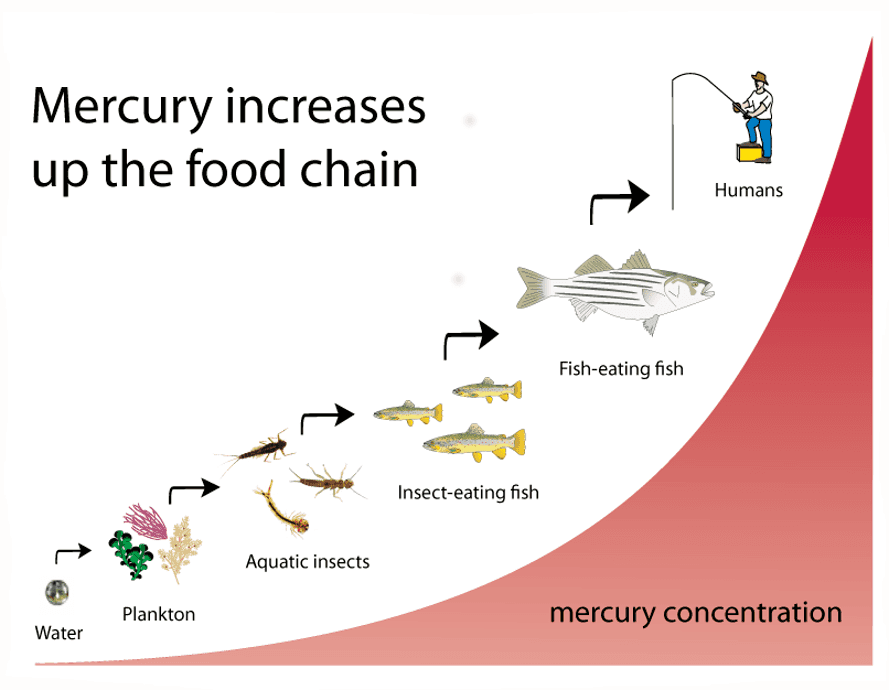
It was recently reported that the world’s oceans now contain three times as much methyl mercury as they did before the industrial revolution. Oceanic mercury becomes highly toxic methyl mercury due to the chemical action of sea water, and methyl mercury causes cognitive impairment, sometimes severe. The report indicates that every ocean on earth has been contaminated in this way.
Mercury is a by-product of mining, the processing of metal ores and the burning of fossil fuels. While some is produced naturally through the erosion of stone and carried by streams and rivers in runoff, this accounts for a tiny fraction of the the mercury now present in sea water.
Metallurgy, the mining and processing of metal ores, was one of the first “industrial” activities of neolithic society, and evidence of extensive mines and ovens for smelting have been documented as being as old as 10,000 years. Metallic ores are commonly found, but the extraction of metals from them requires fire. It is speculated that the first use of heat and fire to extract metal from ore was inadvertent, the result of chunks of stone ore placed within fire pits and which subjected to great heat released the purer metal which was later discovered in the ashes. Gold, of course, can also be found in stream beds in pure form, and was used to craft decorative objects by neolithic peoples.
While it is impossible to ascertain, ancient people must have found the extraction of metal from ore using heat as nearly magical, and its development fueled the study of alchemy and its unrealized promise of transforming metals from base to precious. Marking the transition of tools from stone to metal provides the dividing line between pre and post-civilization. As metal became widely available, first as copper, then bronze (an alloy mix of copper and tin) and finally iron (and its derivative, steel), civilization moved solidly into the age of agriculture, chariots, modern warfare, machinery and of course, pollution.
From small-scale neolithic production to modern smelting plants and open-pit mining which consumes entire mountains of ore, the pollution from tailings (the waste products of smelting) continues to accumulate in ecosystems and within animal bodies, including our own. It may well be that the present increases seen in autism, auto-immune disease, and even cancer can be traced to the widespread ecological pervasion of the wastes of metallurgy into every niche of the environment.
Mining for ore became and remains a widespread and dangerous activity. In ancient times captives and prisoners were used as slave miners, and in some places that practice continues today. Working in cramped, unsafe and toxic conditions, such workers are subjected to tortuous treatment, and their lives are short and unhealthy. Yet, modern life as we know it would be impossible with metallurgy as is the likelihood of replacing it with other forms of matter. Thus our earliest form of manufacture remains essential to human society, dependent upon fire and furnace.
The first furnaces were used as kilns to harden ceramic pots and objects. It was within these high-temperature ovens that the smelting of ore first became practical. It is ironic that this ancient technology developed to help create objects to hold water has become a primary source of water pollution. Now, for the sake of our future and the future of life on this planet, it remains imperative that we harness newer technology to clean up the oceanic mess we’ve made.